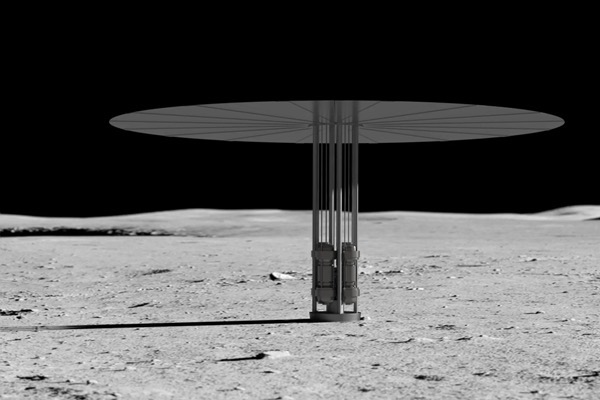Space Energy Race Heats Up: U.S. Accelerates Development of Lunar Nuclear Reactor

The National Aeronautics and Space Administration (NASA) aims to deploy a small nuclear fission power system on the Moon before 2030 to provide stable energy for long-term manned missions, seeking to establish a technological edge ahead of China and Russia. This initiative is seen as a key strategic move in the competition for space dominance.
According to internal directives obtained by U.S. media, NASA will issue a call for proposals within 60 days, selecting two teams to develop reactor systems. A “Fission Surface Power Program Manager” will be appointed to oversee the project. Acting Administrator Sean Duffy stated that the deployment is critical to the success of the Artemis Program.
Nuclear systems can generate power continuously, making them more reliable than solar power in extreme environments, such as the Moon’s multi-week-long nights or the frequent dust storms on Mars. The planned reactor will deliver an output of 100 kilowatts, supporting life-support systems, communication infrastructure, and in-situ resource utilization.
NASA began researching related technologies as early as 2000 and, in 2023, signed contracts with three companies to develop 40-kilowatt-class systems. The new generation of reactors will be smaller and lighter, suitable for transport aboard heavy landers, and is expected to be launch-ready by the end of 2029.
Notably, China and Russia have jointly announced three times in recent years their plans to establish nuclear power systems on the Moon by the mid-2030s. NASA internal documents warn that if the U.S. fails to complete its deployment first, those countries may create “keep-out zones,” restricting America’s ability to develop its lunar bases.
NASA is also advancing its plan to replace the International Space Station (ISS), aiming to establish a new generation of space stations through partnerships with private companies before 2030. Companies such as Axiom Space, Vast, and Blue Origin have expressed interest in participating. However, Congress remains concerned about NASA’s timeline and budget allocations.
- 58 reads
Human Rights
Fostering a More Humane World: The 28th Eurasian Economic Summi

Conscience, Hope, and Action: Keys to Global Peace and Sustainability

Ringing FOWPAL’s Peace Bell for the World:Nobel Peace Prize Laureates’ Visions and Actions

Protecting the World’s Cultural Diversity for a Sustainable Future

Puppet Show I International Friendship Day 2020

